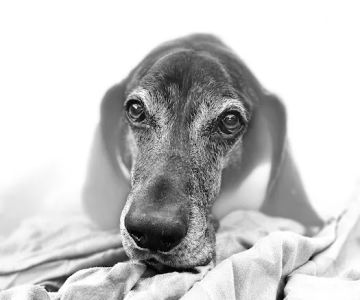Positive Reinforcement Dog Training Techniques
As a dog owner, one of my primary goals has always been to ensure that my pet is not only well-behaved but also happy and comfortable in their environment. Over time, I’ve found that positive reinforcement is the most effective and enjoyable way to train a dog. It strengthens the bond between you and your dog while encouraging good behavior. Here, I’ll share my experience and some key insights into positive reinforcement dog training techniques.
1. Understanding Positive Reinforcement
Positive reinforcement dog training is based on the principle of rewarding desirable behavior, which makes it more likely that the behavior will be repeated. This approach works by associating good behavior with rewards—whether it’s treats, praise, or playtime. Instead of punishing undesirable behavior, positive reinforcement focuses on reinforcing the actions we want to see more of. I discovered that this method was not only kinder but also more effective in the long run.

10645 N Tatum Blvd ste 200 454, Phoenix, AZ 85028, USA
See Details1.1 How Positive Reinforcement Works
When I first started using positive reinforcement, I was amazed by how quickly my dog responded. For example, I would give my dog a treat every time he sat on command. This immediate reward helped him associate the behavior with something positive, and before long, he was sitting reliably every time I asked. The key here is timing—the reward needs to come right after the desired behavior for your dog to make the connection. Whether it’s food, toys, or affection, the reward must be something your dog values.
1.2 Benefits of Positive Reinforcement
There are several reasons why positive reinforcement has become my go-to training method. First, it creates a positive learning environment. My dog enjoys training sessions because he knows he will receive a reward for good behavior. Second, it strengthens the bond between the dog and the owner. Because you are rewarding your dog for their actions, they learn to trust and respect you. Lastly, positive reinforcement leads to long-lasting behavior changes, as it focuses on motivating the dog to make the right choices on their own.
2. Techniques of Positive Reinforcement
Positive reinforcement can be implemented in several ways, depending on the behavior you want to encourage. Here are some techniques I’ve found to be particularly effective in training my dog:
2.1 Treats as Rewards
One of the most common and effective techniques I use is rewarding my dog with treats. When teaching basic commands like “sit,” “stay,” or “come,” I reward him immediately with a small treat every time he follows through correctly. The key here is to keep the treats small and healthy to prevent overfeeding. I also like to vary the treats to keep things interesting for my dog.
2.2 Verbal Praise and Affection
Verbal praise and affection are also fantastic reinforcements. Sometimes, a simple “Good boy!” followed by a pat on the head is all it takes for my dog to feel rewarded. This is especially effective when training a dog to perform tricks or complex behaviors. By offering praise, I reinforce the positive behavior while making my dog feel loved and valued.
2.3 Playtime and Toys
If your dog loves playtime, this can be another form of positive reinforcement. I’ve used toys as rewards for successfully completed tasks. For example, after my dog successfully completes an obstacle course, I reward him with a game of fetch. This approach not only reinforces the behavior but also satisfies my dog’s need for physical activity and mental stimulation.
3. Shaping Behavior with Positive Reinforcement
Another great technique I’ve used to train my dog is shaping, which involves reinforcing successive approximations of a desired behavior. When I wanted to teach my dog to fetch a specific item, I didn’t expect him to get it right immediately. Instead, I reinforced smaller steps, such as going near the item, sniffing it, and then finally picking it up. Shaping helps break down complex behaviors into manageable steps and makes training feel more achievable for both the dog and the owner.
3.1 Reinforcing the Process
In shaping, it’s important to reinforce each small step. When my dog first touched the item with his paw, I immediately rewarded him with a treat. The next step was reinforcing him for picking up the item in his mouth. This gradual process kept my dog engaged and motivated to continue learning, and over time, he learned the full behavior.
4. Common Mistakes to Avoid in Positive Reinforcement
While positive reinforcement is a fantastic method, there are some common mistakes to avoid to ensure the training is effective. One of the biggest pitfalls I encountered was not being consistent enough with rewards. I found that if I occasionally forgot to reward my dog after a correct behavior, he became confused about what I expected. It’s also crucial to make sure the reward is timely—too long a delay between the behavior and the reward can lead to misunderstandings.
4.1 Not Reinforcing the Right Behaviors
Another mistake I made early on was accidentally reinforcing unwanted behaviors. For example, I once rewarded my dog when he jumped on me, thinking it was cute. However, this only encouraged him to jump more frequently. It’s important to be mindful of what you’re reinforcing and to avoid rewarding behaviors you don’t want to see more of.
4.2 Overusing Treats
While treats are an effective form of positive reinforcement, I learned not to overuse them. If treats are given too frequently, your dog may become overly dependent on them, which could hinder progress. I recommend gradually phasing out treats over time and replacing them with praise, playtime, or toys to keep your dog motivated without relying solely on food rewards.
5. When to Seek Professional Help
While positive reinforcement is highly effective, some dogs may require additional support, especially if they are struggling with specific behaviors. If you find that your dog is not responding to training or if you are experiencing difficulty addressing behavioral problems, it might be time to seek the help of a professional dog trainer who specializes in positive reinforcement techniques. A trainer can provide guidance and tailor the training to your dog’s specific needs, helping you both achieve the desired results.
5.1 Group Classes vs. Private Training
If you're considering professional training, you may have the option of group classes or private sessions. I personally found group classes to be a great way to socialize my dog, while private sessions provided more personalized attention to address specific challenges. Both options have their benefits, and the right choice depends on your dog’s personality and your training goals.










